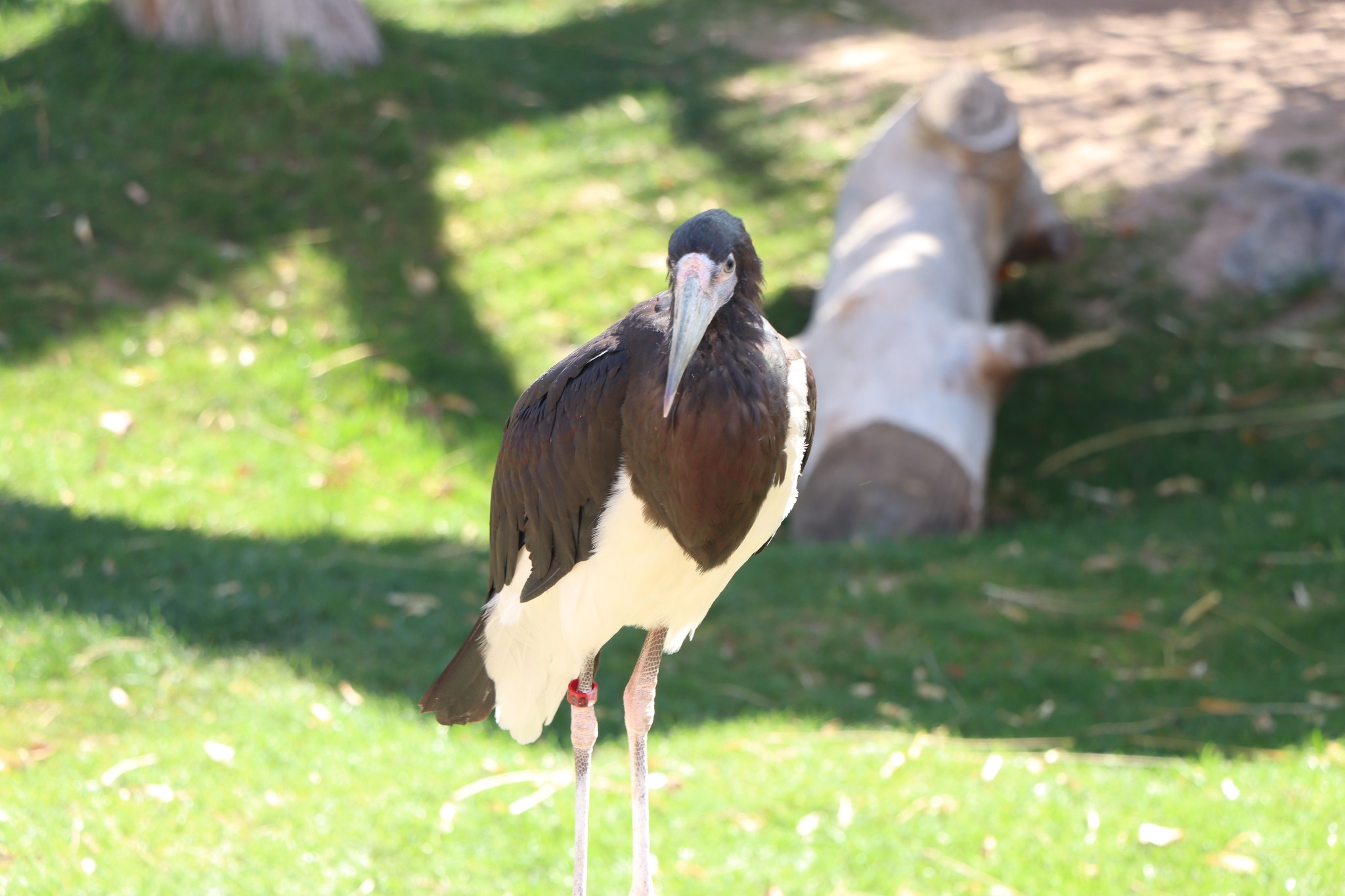- The physical characteristics and unique adaptations of the Abdim’s stork, focusing on its distinctive plumage and morphology.
- Habitat, distribution, and migratory patterns of Abdim’s stork, emphasizing their range across Africa and seasonal movements.
- The ecological role and diet of Abdim’s stork and how these birds contribute to their natural ecosystems.
- Conservation status, challenges, and efforts protecting the Abdim’s stork, highlighting threats and mitigation strategies.
- The significance of zoo management in the conservation and education about Abdim’s stork and other similar species.
Abdim’s storks are a fascinating species primarily recognized for their striking plumage and anatomical adaptations, which facilitate their survival in various habitats. The species, Ciconia abdimii, displays a captivating contrast of dark feathers covering their wings and a velvety white cloak of feathers adorning their bellies. Such coloration provides camouflage and is crucial for thermal regulation, helping them reflect and absorb heat as necessary. Storks as a genus possess little or no webbing between the toes, a feature that underscores their adaptation to wading through shallow waters and marshy environments. The exposed tibia of these birds, devoid of feathers, enhances their ability to move efficiently through their native habitats without getting weighed down or entangled by dense foliage.
Understanding the habitat, distribution, and migratory behavior of Abdim’s stork offers insight into their ecological preferences and the environmental factors influencing their life cycle. Found predominantly in sub-Saharan Africa, these storks thrive in savannahs, grasslands, and wetlands, habitats that provide ample food resources and nesting sites. However, they are not limited to one geographical area; their migratory patterns extend across thousands of miles, from East Africa to Southern Africa. These movements, timed with seasonal rains, are dictated by the availability of food resources, such as locusts, crickets, and other insects. As a result, the species is highly dependent on climatic conditions, which play a pivotal role in determining the success of their breeding cycles.
Moreover, the ecological role of Abdim’s stork is substantial. As opportunistic feeders with a varied diet, they play a crucial part in controlling insect populations and contribute to the biodiversity of their habitats. Their presence in an ecosystem helps maintain the balance not just by managing pests but also by providing food for larger predators. These storks have been observed feeding on small vertebrates and reptiles, supplementing their diet when necessary. By engaging in this diverse eating pattern, they inadvertently aid in nutrient cycling, which benefits the plant communities and the overall ecological health of their habitats.
Despite their ecological importance, Abdim’s storks face numerous threats that have led to increasing concerns over their conservation status. Habitat destruction due to agricultural expansion, urbanization, and climate change poses significant challenges to their survival. These activities reduce the availability of natural habitats and disrupt their migratory routes, which can affect their food supply and breeding success. Although currently listed as "Least Concern" by the International Union for Conservation of Nature (IUCN), continuous monitoring and conservation efforts are essential to mitigate these threats before they escalate to more severe levels.
The role of zoo management in the conservation of Abdim’s stork and similar species is vital. Zoos provide safe environments where these birds can be studied, bred, and protected from their natural challenges. Furthermore, they serve as educational platforms to raise awareness about the species and broader conservation issues. Through captive breeding programs and international cooperation, zoos can help safeguard genetic diversity, ensuring the long-term survival of the species. Effective management strategies include habitat simulation, dietary supplementation, and behavioral enrichment to promote natural behaviors and overall well-being.
Educating the public about the needs of Abdim’s stork and their ecological significance is crucial for promoting conservation efforts. By fostering a sense of responsibility and appreciation, zoological institutions can inspire community engagement and support for policies that protect these birds and their habitats. As ambassadors for their kind, Abdim’s storks in captivity notably highlight the intricate connection between human activities and wildlife conservation. Their stories and importance underscore the continual need for understanding wildlife dynamics, conserving natural habitats, and promoting sustainable coexistence with nature.
Through well-informed discussions on the physical characteristics, migratory habits, ecological contributions, and conservation challenges of Abdim’s stork, we can better appreciate the complexities of nurturing and protecting this species. This commitment extends beyond immediate action to lifelong learning and advocacy, ensuring that these magnificent birds, and the ecosystems they inhabit, thrive for generations to come. Maintaining this focus is crucial for biodiversity conservation and the health of our planet’s natural systems.
*****
Source Description
Happy Abdim’s storks are known for their dark feathers on their wings and white feathers covering their bellies. Storks in general have little or no webbing between the toes and their tibia is bare of feathers.

